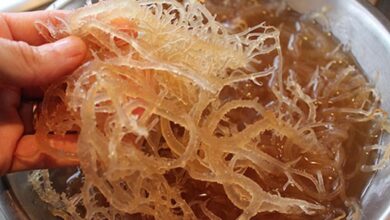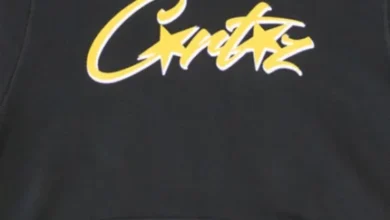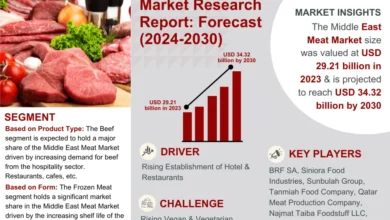

Filled with crunchy goodness, cereals today are the number one breakfast option for Americans. They had a bland flavor at the start but now they come in multiple colors and diverse flavors that appeal to taste buds. Thanks to strategic marketing, cereals became a domestic product and the country’s cultural culinary icon, endorsed by popular Hollywood stars.
The revenue of cereals is constantly improving so brands utilize custom cereal box packaging to do justice to their high market value. They keep playing with graphics, colors, and printing choices to create fine packaging. Look at all the top brands whether General Mills, Kellogg, Nestle, PepsiCo., Quaker Oats, or Weetabix. They choose tailored cereal boxes over other packaging types by huge margins.
Becoming America’s Popular Breakfast: A Short Story of Cereals
Ever wondered how this mildly popular item became the breakfast food of 335 million Americans? Let’s have a synopsis of the origins, evolution, and fame of cereals. A religious man named James Caleb Jackson is reported to have created the first breakfast cereal from graham flour dough in 1863. A surgeon named John Harvey Kellogg later made a version of this named granola and one of his patients followed the recipe to create grape nuts.
Following World War II, cereal use rose with the advent of the baby boom. People were also in dire need of a healthy breakfast option as in the colonial period, daily wagers used to eat either leftover from last night or porridge. The European elite on the other hand used to savor giant breakfast buffets with sausage, egg, ham, and sausage dishes. Cereals became the healthy substitute while brands also started adding sugar or corn syrup in cereals to elevate their taste.
Role of Marketing
What multiplied the cereal sales was the genius publicity through TV, magazines, and packaging. Tony the Tiger and other mascots like Katy the Kangaroo and Sonny became the face of cereal brands and lured young buyers.
Also, cereals were promoted as the healthy breakfast option as they were reported to be light on the stomach and were made from organic ingredients. Many studies were published and marketed to create the trust of the American public in cereals. Today, cereals are the most popular breakfast item that people also often consume at other times of the day. Just in 2020, around 283 million Americans ate boxed cereals, and nearly 2.7 billion cereal boxes are sold every year which exhibits their fame in modern times.
Cereal Boxes: The Number 1 Packaging Choice for Brands
You can better realize with this overview that packing a diverse range of cereals is not a small deal and that’s why brands need the finest possible packaging to do justice to their market value. They prefer custom cereal boxes by a huge margin due to their versatile merits that brands can’t find in the old packaging. Let’s have a look at each of them:
- Full Alteration: The market status of a box is measured by its flexibility to alteration and cereal boxes do not fail in this aspect. From old times till today, their ability to alteration only improved and thus, modern cereal boxes accept all finishing types, printing schemes, and materials.
- Marketing: No brand can succeed without marketing their items and cereal boxes have never failed to impress in this area. From popular mascots and the use of vibrant colors to accepting the latest embeds like QR codes and NFCs, cereal boxes always achieve marketing goals for brands.
Fast Fact: Have you ever wondered why cereal boxes are placed on lower shelves and why the mascots on the boxes look down? Well, brands know that cereals have a large young customer base that is short in height, so they keep the boxes on lower shelves. The secret behind mascots looking down is to make eye contact with young customers i.e., kids, compelling them to force their mommies and daddies to buy cereals.
- Safe Haven for Cereals: Cereals come under items that can be easily crushed under high pressure or due to rough handling. Thus, keeping their safety in mind, brands create cereal boxes with thick materials that minimize the impact of rough usage or added pressure.
- Serve for a Long Time: Cereals are consumed over an extensive period so buyers need boxes to store them until they last. Cereal boxes come to the rescue with their material strength and offer long-term storage ability. Buyers can keep cereals in them for a long time and close the lids to prevent humidity from affecting the cereal quality.
Saving Future Earth with Cereal Boxes
Climate pundits are showing worry over changing weathers that have caused havoc in 2024 similar to previous years. Tornados, intense rains, severe heat, and forest burns have destroyed many human lives whereas, a 1-degree rise in the heat was recorded globally for 2023 which is equally alarming. Packaging makes an impact on the climate and for this reason, brands need to play their role as the key players.
The good news is that green materials already exist that also offer peak safety to packed goods. Kraft and card stock are among the chief green materials, already popular in the market for being robust. They release no Carbon or any other harmful gas in nature and can be recycled as well. Brands can save a lot of material costs on making new boxes which turn into major profits. Cereal boxes can be made from these green materials which raise their market status. Brands just have to add labels depicting their vision for a green climate.
Did You Know?
- H. Kellogg originally made cornflakes to reduce sexual desires as he believed that a diet of certain foods like his cereals could curb these craves.
- 50% of the US citizens eat cereal for breakfast every day. Each person consumes 50 kg of cereal or 160 bowls every year.
- There are over 10,000 diverse kinds of cereals in the world.
- Tony the Tiger outsold Katy the Kangaroo and became the mascot face for Frosted Flakes.
- Cheerios is the most famous cereal type eaten today. Its original name was Cherri Oats.
- The word “cereal” is derived from Ceres who was the Roman goddess of harvest and agronomy.
- The US cereal industry utilizes 400 million kgs of sugar annually.
- Many cereals are magnetic due to the iron they contain.
- After milk and beverages, cereals are the most popular items sold in grocery stores.
- The US comes in 4th place, after Ireland, England, and Australia when it comes to global cereal consumption.
Do you stress over finding the right packaging solutions for your brand? Worry not and get in contact with Packaging Mania and watch other brands follow your box styles.








